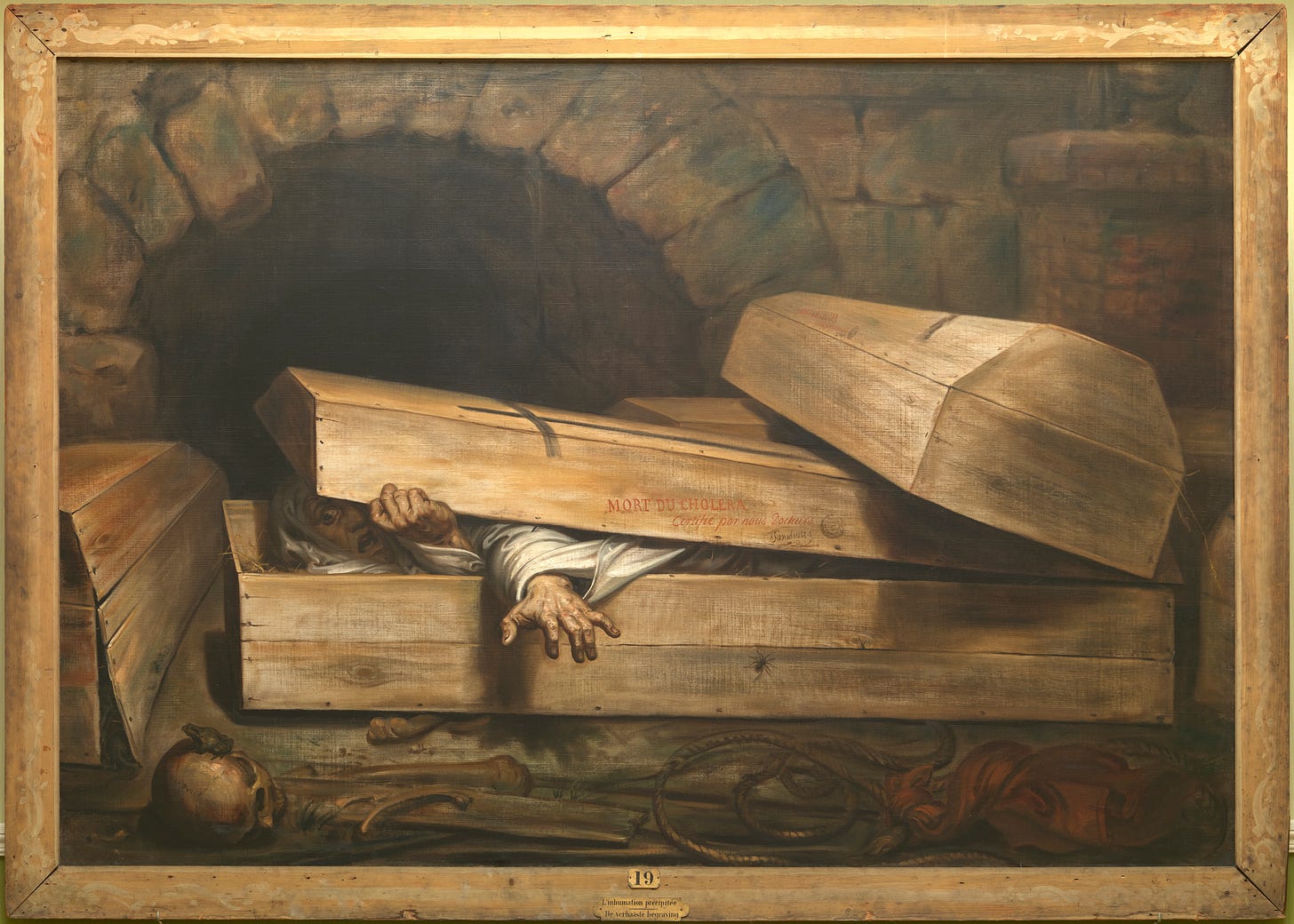The Belgian Trip: Worms and Epitaphs - Antoine Wiertz
The little known artist lies in a tomb so anonymous it would be easy to overlook. No-one could say the same about his paintings.
The Cimetière d’Ixelles is one of the most important cemeteries in Belgium, but it’s not really a place where you’ll find the graves of its most celebrated names. There’s no Magritte buried here, no Bruegel, no Hergé. Instead, it’s mostly home to painters, writers, statesmen, and scientists who remain best known in their native country. The most famous names recognisable to anyone who isn’t actually Belgian are probably Victor Horta, the Art Nouveau architect, and Frederic Neuhaus, inventor of the chocolate praline.
Amongst all these, one tomb stands out for being almost anonymous. A plain granite block, its simple inscription is barely visible, eroded by the passage of time. This is the grave of Antoine Wiertz, one of the most unusual painters ever to emerge from Belgium. Or anywhere else for that matter.
Little known outside his native country, Wiertz was an unconventional character to say the least. A quintessential “visionary artist”, his bizarre paintings and extraordinary personality made him one of the major figures of the Belgian Romantic movement. But, even during his lifetime, his works divided opinion and that hasn’t changed over the years. Some see him as an important precursor of Symbolism, and even Surrealism, while others find him overly grandiose, grotesque and absurd. Apart from a brief biography published shortly after his death, no substantial study of his work has ever been published, and even a recent conference at the Musée Wiertz itself was entitled “Antoine Wiertz: Sublime or ridiculous?”
Antoine Wiertz, The Premature Burial (1854). Image: Bruxelles, Musées royaux des Beaux-Arts de Belgique, inv. 1968 — © MRBAB, photo : J. Geleyns/ Ro scan
And yet Wiertz remains a highly distinctive artist and has retained a significant place in the history of the Belgian capital, partly due to his unwavering belief in his own genius, and partly because of an unusual arrangement he made with the Belgian government.
Keep reading with a 7-day free trial
Subscribe to Mind Trip to keep reading this post and get 7 days of free access to the full post archives.






